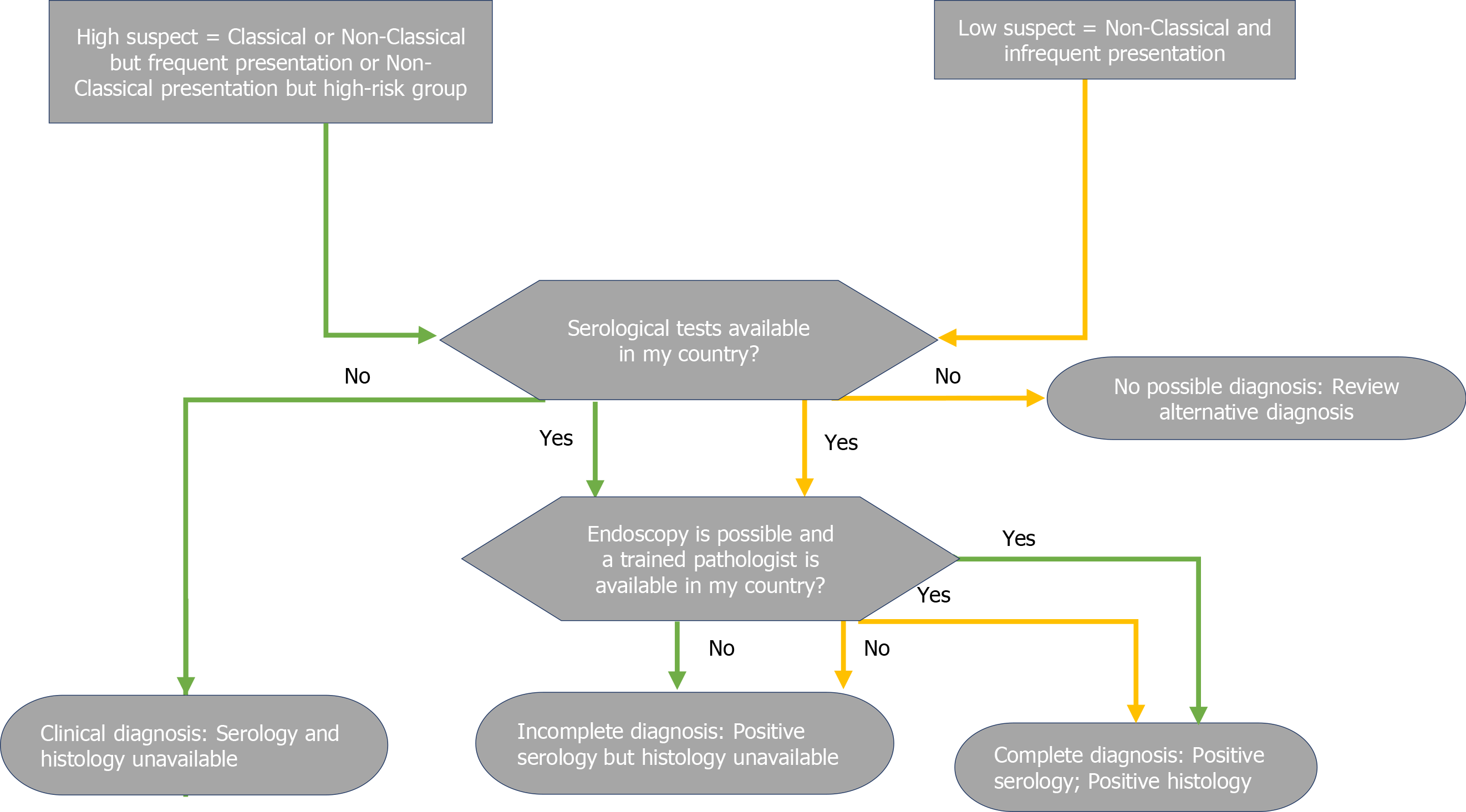Copyright
©The Author(s) 2022.
World J Gastroenterol. Jan 7, 2022; 28(1): 154-175
Published online Jan 7, 2022. doi: 10.3748/wjg.v28.i1.154
Published online Jan 7, 2022. doi: 10.3748/wjg.v28.i1.154
Figure 3 Worldwide adapted decision-making process for diagnosing celiac disease.
Highly suspicious celiac disease (CD) comprises “classical presentation” (i.e., classical symptoms in children include failure to thrive, weight loss, growth failure, vomiting, chronic diarrhea, bloating, Iron-deficiency anemia, muscle wasting, oedema due to hypoproteinemia, irritability and unhappiness; in adults, classical symptoms include chronic diarrhea, weight loss, iron-deficiency anemia, malaise and fatigue, oedema due to hypoproteinemia, and osteoporosis), frequent “non-classical presentation” (i.e., iron deficiency and hypertransaminasemia) and “non-classical presentation” but high risk group (i.e., CD first-degree relatives, autoimmune conditions such as type 1 Diabetes Mellitus, and thyroid disease, genetic conditions such as IgA deficiency, Down syndrome, Turner syndrome and Williams-Beuren syndrome).
- Citation: Raiteri A, Granito A, Giamperoli A, Catenaro T, Negrini G, Tovoli F. Current guidelines for the management of celiac disease: A systematic review with comparative analysis. World J Gastroenterol 2022; 28(1): 154-175
- URL: https://www.wjgnet.com/1007-9327/full/v28/i1/154.htm
- DOI: https://dx.doi.org/10.3748/wjg.v28.i1.154









